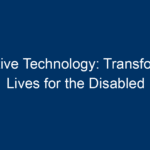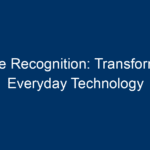In an ever-evolving world, where global interconnectedness and rapid urbanization characterize our lives, health surveillance has emerged as a crucial strategy for enhancing public safety. The ongoing pandemic has underscored the importance of effective health monitoring systems that can detect infections, assess risks, and enable timely responses. This article delves into health surveillance—its significance, methodologies, and the vital role it plays in safeguarding our communities. Let’s explore how health surveillance can bolster public safety today and into the future.
Understanding Health Surveillance
What is Health Surveillance?
Health surveillance is the systematic collection, analysis, and interpretation of health-related data. It serves as a foundation for public health action, allowing authorities to identify and respond to health threats efficiently. By monitoring trends in diseases, surveillance equips healthcare professionals and policymakers with the insights needed to protect communities.
Importance of Health Surveillance
Health surveillance plays a pivotal role in:
-
Early Detection of Outbreaks: Swift identification of health threats helps curtail the spread of diseases. For instance, rapid reporting systems can trigger immediate responses to contagious disease outbreaks.
-
Monitoring Disease Trends: By analyzing historical health data, local and global patterns of disease emergence can be identified, allowing for targeted interventions.
- Resource Allocation: Effective health surveillance helps governments allocate resources where they are needed most, thereby enhancing the overall effectiveness of public health strategies.
Types of Health Surveillance
1. Active Surveillance
Active surveillance involves proactive efforts to identify health events. Health officials may conduct surveys, visit healthcare facilities, or directly contact healthcare providers to gather information. This approach is particularly useful in managing outbreaks and studying specific health concerns.
2. Passive Surveillance
Unlike active surveillance, passive surveillance relies on the routine reporting of data from healthcare providers. While less resource-intensive, this method can sometimes miss less obvious health trends or outbreaks since it depends on those providers to report abnormalities.
3. Syndromic Surveillance
Syndromic surveillance utilizes real-time data to detect potential outbreaks based on clinical symptoms rather than confirmed diagnoses. By analyzing data from emergency room visits and symptom reports, health officials can identify unusual patterns that may signal an emerging health crisis.
4. Laboratory-Based Surveillance
Laboratory-based surveillance involves tracking pathogens through culture-confirmed case data. This method plays a crucial role in understanding the spread of specific diseases and monitoring resistance to medications.
Technologies Enhancing Health Surveillance
1. Data Analytics and Machine Learning
Advancements in technology have revolutionized health surveillance. Big data analytics and machine learning algorithms allow for the aggregation of vast amounts of health data, facilitating real-time analysis. Predictive analytics can help forecast disease outbreaks and identify at-risk populations.
2. Mobile Health Applications
Mobile health applications are increasingly utilized for reporting symptoms and health statuses. By enabling users to share data voluntarily, these apps enhance the ability to monitor diseases in real-time and increase community engagement in health surveillance.
3. Geographic Information Systems (GIS)
GIS technology provides spatial analysis capabilities that help visualize health data geographically. By mapping the occurrence of diseases, public health officials can identify hotspots and allocate resources more effectively.
Challenges in Health Surveillance
1. Data Privacy Concerns
While effective health surveillance relies on comprehensive data collection, there are concerns regarding patient privacy. Striking a balance between public safety and individual rights is critical for maintaining community trust.
2. Resource Limitations
Many public health agencies face budget and staffing constraints, limiting their ability to implement robust health surveillance systems. Increased investment is needed to enhance capabilities in monitoring and responding to health threats.
3. Integration of Data Systems
Health data often resides in disparate systems, making it challenging to consolidate information for analysis. Improving interoperability among various health information systems is essential for effective surveillance.
Global Best Practices in Health Surveillance
1. WHO Global Health Observatory
The World Health Organization (WHO) has established the Global Health Observatory to provide essential health data and resources. This platform enables countries to share information and best practices, fostering international collaboration in health surveillance.
2. National Notifiable Diseases Surveillance System (NNDSS)
In the United States, the NNDSS is a national system for monitoring specific diseases. States report cases to federal agencies, supporting a comprehensive understanding of public health threats.
3. Global Outbreak Alert and Response Network (GOARN)
The GOARN is a worldwide network established by the WHO. It facilitates swift responses to health crises by pooling resources, expertise, and data among member organizations and countries.
Future of Health Surveillance
The Role of Artificial Intelligence (AI)
As we look to the future, AI is poised to play a transformative role in health surveillance. By automating data collection and analysis, AI can enhance the speed and accuracy of surveillance efforts, allowing for timely public health responses.
Integrating Global Data
The interconnected nature of our world highlights the importance of global collaboration in health surveillance. Standardizing data collection and reporting methods can improve international health security, enabling countries to respond more effectively to global threats.
Focus on Mental Health Surveillance
The growing recognition of mental health as a critical component of overall wellbeing underscores the need for mental health surveillance. Monitoring trends in mental health will be vital in addressing the impacts of crises such as pandemics and natural disasters.
Conclusion: Actionable Insights for Enhanced Public Safety
Effective health surveillance is indispensable for enhancing public safety today. By embracing innovative technologies, fostering international cooperation, and addressing existing challenges, communities can fortify their defenses against health threats.
Actionable Insights:
-
Invest in Technology: Governments should allocate more resources to integrate advanced technologies like AI into health surveillance systems.
-
Strengthen Infrastructure: Building robust reporting systems and creating standardized data-sharing platforms can enhance the efficiency of health monitoring.
-
Engage Communities: Encourage public participation in health surveillance through user-friendly apps that promote symptom reporting and health literacy.
- Promote Data Privacy: Establish clear guidelines and policies that ensure data privacy without compromising public health safety.
In conclusion, the proactive approach of health surveillance not only mitigates the impact of diseases but also fosters a culture of awareness and responsiveness. By implementing these insights, we can pave the way for a healthier, safer future.




